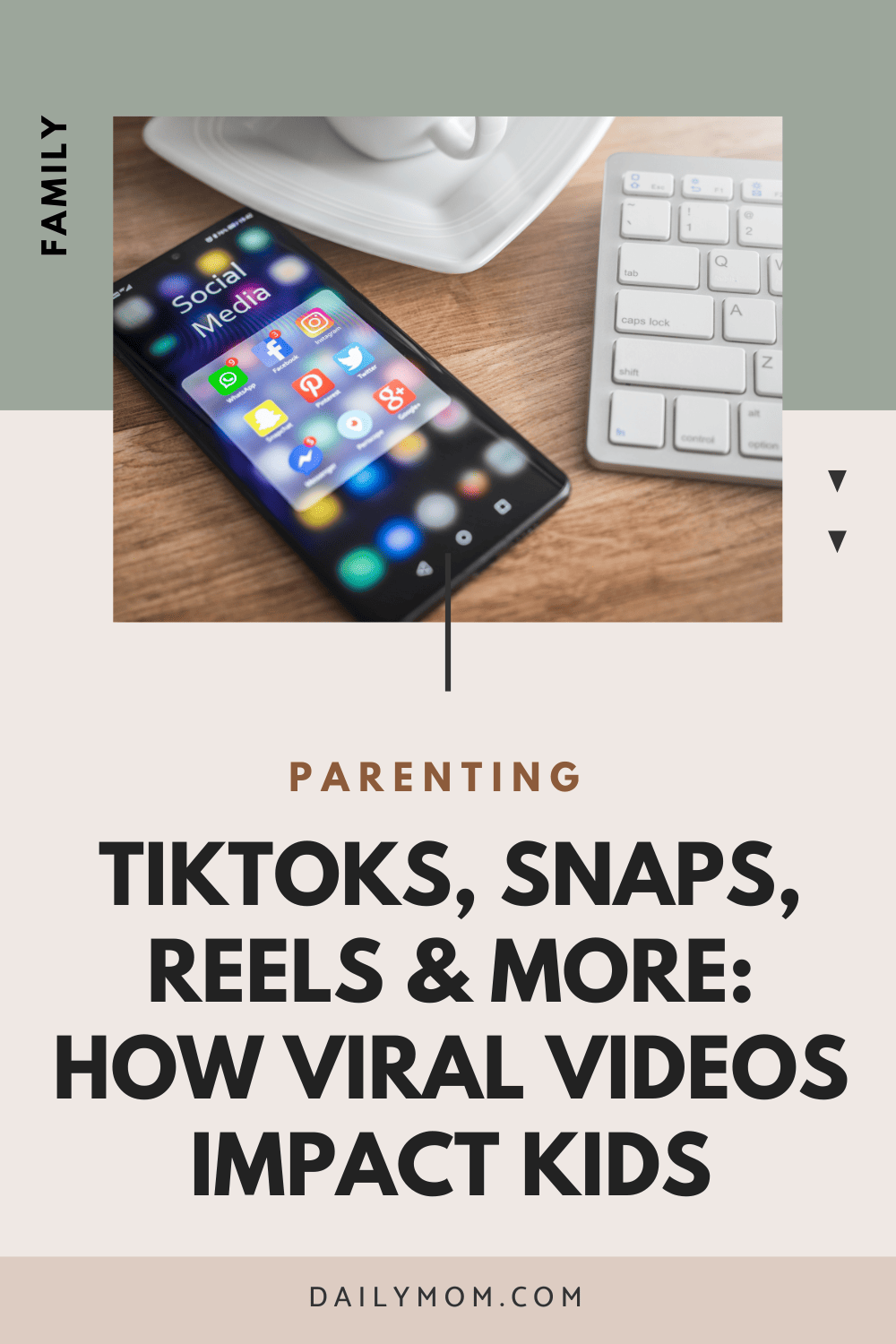As moms, we can’t ignore the impact that viral video culture has on our children. With the rise of platforms like TikTok and YouTube, children are exposed to an endless stream of videos that can influence their behavior, attitudes, and values. In this article, we’ll explore the implications of viral video culture on children, from the potential benefits to the risks and challenges that parents need to be aware of.
Types of Viral Video Platforms Kids Are Using Today
When it comes to viral video platforms, there are several options that kids are using today. These platforms have gained immense popularity among young users due to their entertaining and interactive nature. Let’s take a look at some of the more popular ones.

TikTok
TikTok has taken the world by storm with its short-form viral video content. Users can create and share videos ranging from lip-syncing to dancing, comedy skits, and more. One of the unique features of TikTok is its algorithm that suggests videos based on users’ preferences. While TikTok is primarily used by teenagers, it has gained popularity among younger children as well.
Pros:
- Easy-to-use interface
- Wide variety of content
- Creative video editing tools
Cons:
- Privacy concerns
- Potential exposure to inappropriate content
Age Range: 13 and above
YouTube Kids
Designed specifically for children, YouTube Kids offers a safe and curated environment for young users. It features a wide range of kid-friendly viral video content, including educational content, cartoons, and music. The platform also offers parental controls to ensure a safe viewing experience.
Pros:
- Age-appropriate content
- Parental controls
- Educational videos
Cons:
- Limited content compared to regular YouTube
- Ads targeted towards children
Age Range: 2-12 years old
Instagram Reels
Instagram Reels is a feature within the Instagram app that allows users to create and share short viral video reels. It offers a variety of creative tools such as filters, effects, and audio clips. While Instagram is not specifically designed for kids, many young users are active on the platform.
Pros:
- Integration with Instagram’s existing features
- Access to a large user base
- Ability to share videos with followers
Cons:
- Limited video editing options compared to dedicated video platforms
- Exposure to non-age-specific content
Age Range: 13 and above
Snapchat
Snapchat is known for its disappearing photo and video messages, but it has evolved into a popular platform for sharing short viral video content as well. Users can create fun and engaging videos using filters, lenses, and augmented reality effects. While Snapchat is used by a wide range of age groups, it is particularly popular among teenagers.
Pros:
- Fun and interactive viral video creation tools
- Private messaging features
- Discover section for exploring curated content
Cons:
- Limited video editing capabilities
- The temporary nature of the content may lead to missed opportunities
Age Range: 13 and above
These are just a few examples of viral video platforms that kids are using today. Each platform offers its own unique features and benefits, but it’s important for parents and guardians to ensure that children are using these platforms in a safe and responsible manner. Regular monitoring and open communication are key to ensuring a positive and healthy online experience for kids.

READ MORE: Smart Ways To Teach Your Kids To Use Social Media
The Risks and Challenges of Viral Video Culture
Unfortunately, there are risks and challenges associated with viral video culture that parents need to be aware of. One of the biggest concerns is the potential for exposure to inappropriate content. While most video-sharing platforms have policies in place to prevent explicit or violent content from being posted, there is still a risk of children stumbling upon inappropriate videos or being targeted by predators.
Another challenge of viral video culture is the potential for cyberbullying. Children who create and share videos online can be subject to criticism and harassment from their peers, which can have a lasting impact on their self-esteem and mental health. It’s important for parents to talk to their children about the risks of cyberbullying and to monitor their online activity to ensure their safety.

The Potential Benefits of Viral Video Culture on Children
While it’s easy to focus on the negative aspects of viral video culture, there are also potential benefits for children. For example, viral videos can be a source of inspiration and creativity, encouraging children to explore their own talents and interests. Many children have found their own voice and sense of identity through creating and sharing videos on platforms like TikTok.
Viral videos can also be a source of entertainment and social connection for children. Watching and sharing viral video content with friends can be a fun way for children to bond and communicate, particularly during times out of school, during times of social isolation like being home sick from school, or for students who home school or engage in distance learning.
READ MORE: Why You Should Delete Your Social Media
Setting Boundaries and Monitoring Screen Time
One of the most important things parents can do to protect their children from the risks of viral video culture is to set clear boundaries around screen time. The American Academy of Pediatrics recommends that children between the ages of 2 and 5 should have no more than one hour of screen time per day, while children between the ages of 6 and 18 should have no more than two hours per day.

Parents should also monitor their children’s online activity and set limits on the types of viral video content they can watch. For younger children, it may be necessary to restrict access to certain platforms altogether, while older children may need more guidance and support in navigating the online world.
READ MORE: Teens Sexting: The Alarming Reality Of This Dangerous Practice
Encouraging Critical Thinking and Media Literacy
Another important strategy for protecting children from the negative effects of viral video culture is to encourage critical thinking and media literacy. This means teaching children to evaluate the content they consume online and to question the sources and motivations behind it.
Parents can encourage media literacy by engaging their children in conversations about the videos they watch and helping them develop the skills to analyze and interpret media messages. This can include discussing the impact of stereotypes and biases in videos, as well as teaching children how to identify fake news and misinformation.

Modeling Positive Screen Time Habits
Finally, it’s important for parents to model positive screen time habits for their children. This means setting aside time for family activities that don’t involve screens, as well as demonstrating healthy boundaries around screen time.
Parents can also model positive behaviors online by sharing and creating content that is positive, uplifting, and appropriate for all ages. By being mindful of their own online behavior, parents can help their children develop healthy attitudes and behaviors around social media and viral video culture.
READ MORE: A Simple Guide to Proper Phone Etiquette
The impact of viral video culture on children is a complex issue that requires careful consideration from parents. While there are potential benefits to the creative and social aspects of viral video culture, there are also risks and challenges that cannot be ignored. The potential for exposure to inappropriate content and cyberbullying are two of the biggest concerns that parents need to be aware of.
To protect their children, parents need to set clear boundaries around screen time and monitor their children’s online activity. This can involve restricting access to certain platforms and limiting the types of videos their children can watch. Parents can also encourage critical thinking and media literacy by engaging their children in conversations about the videos they watch and helping them develop the skills to analyze and interpret media messages.
Finally, it’s important for parents to model positive screen time habits for their children, like setting aside time for family activities that don’t involve screens and demonstrating healthy boundaries around screen time. By being mindful of their own online behavior, parents can help their children develop healthy attitudes and behaviors around social media and viral video culture.
In the end, the key is to find a balance between the benefits and risks of viral video culture for children. With careful monitoring, clear boundaries, and a focus on media literacy and positive screen time habits, parents can help their children navigate the online world safely and responsibly.
WANT TO READ MORE?
When it’s time to put down the devices and take a break from the viral video, check out these 10 Great Kids TV Shows to Watch with Your Toddler That You’ll Actually Enjoy!
CONNECT WITH DAILY MOM
💖 NEWSLETTER: DAILY READS IN YOUR INBOX 💖
Sign up to receive our picks for the best things to do, see and buy so you can relax and focus on more important tasks! Let us help you be the best version of yourself you can be!
BE SOCIAL WITH US
📌 LOVE IT? PIN IT!📌












































